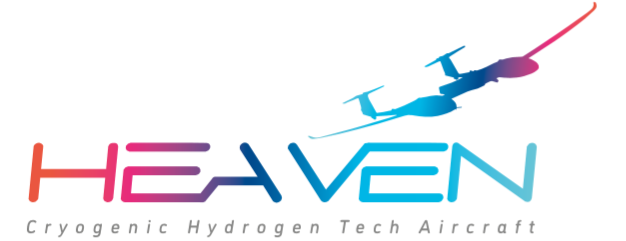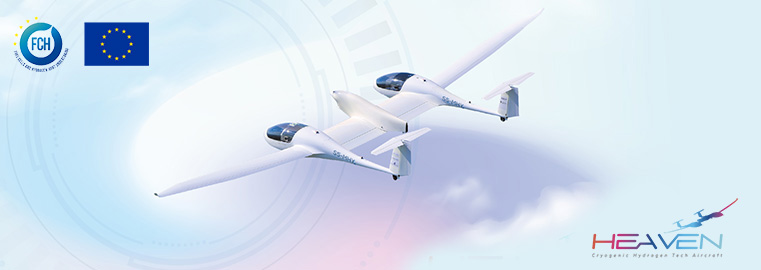The European consortium is actively participating in the rise of cryogenic hydrogen and fuel cells as a mobility alternative on a planet affected by climatic change. This technology could deliver a commercially viable airplane solution around 2030.
The Heaven project reaches the halfway point of its journey with some important advances on the table. Through the combined efforts of its six partners, the European consortium is actively participating in the rise of cryogenic hydrogen and fuel cells as a mobility alternative on a planet affected by global warming.
The challenge is huge: According to the Flightpath 2050, the Europe’s vision for aviation, by 2050 the technologies and procedures available will have to allow a 75% reduction in the carbon dioxide emissions per passenger kilometer, a 90% reduction in the nitrous oxide emission and the perceived noise of flying aircraft reduced in a 60%. Furthermore, taxiing, the movement of aircrafts on the ground, should be emissions free. Although these are very ambitious goals, the technology is here and a zero-emission aircraft will be able to fly 1.000 km for up to 100 passengers. From Heaven’s perspective, liquid-hydrogen based energy storage coupled with next generation of fuel-cell systems could deliver a commercially viable airplane product with an entry into service around 2030, with capability of operating multiple flights before refuelling.
In this demanding puzzle, Air Liquide has fine-tuned the specifications and requirements applicable to the cryogenic tank and will be manufacturing and testing the storage in its facilities. Besides, H2Fly will soon finish the definitions, safety assessment and technical requirements for the safe integration of liquid hydrogen, the cryogenic tank and the proton exchange membrane (PEM) fuel cell systems within the aircraft. In charge of the conceptual design of the overall architecture of the powertrain, DLR will focus on the fuel cell system development, including the selection and determination of the balance of plant components and their assembly to a full-scale system. In addition to that, the operation strategies will be determined and the system controller will be developed.
For ElringKlinger a major aspect in 2020 was the development and conceptual design of the next generation NM5 fuel cell stack support which is a major step towards a more robust as well as user and industrialization-friendly design. The goal for the next month is to manufacture the stacks with the new NM5 Evo design, to test them and to supply the stacks to the project partner for system integration.
Pipistrel has been focused on developing special modifications to the demonstration aircraft to facilitate the integration of the liquid hydrogen fuel tank designed by Air Liquide, ensuring best industry practice and established ARP and latest SAE AIR6464 guidelines are encompassed. Concurrently Pipistrel is already applying lessons learned from the collaboration with Air Liquide to conceptualize future larger liquid hydrogen powered aircraft, in particular looking at the Miniliner 19-seat class of zero emission short-haul future advanced aerial mobility. 2021 will mean the start of the effort for the design of the integration of the ElringKlinger fuel cells into the fuel cell system developed by DLR and the necessary airframe modifications. Logistics and planning for system coupling and integrated systems tests will also be part of this year’s effort.
Given the complexity of the current context, with the world economy hit by COVID, the Heaven project is progressing at a good pace despite restrictions and difficulties. The objective remains the same: to contribute with an emission-free solution to the improvement of global aviation.
This project has received funding from the Fuel Cells and Hydrogen 2 Joint Undertaking under grant agreement No 826247. This Joint Undertaking receives support from the European Union’s Horizon 2020 research and innovation programme, Hydrogen Europe and Hydrogen Europe research.
Download Press Release here.

